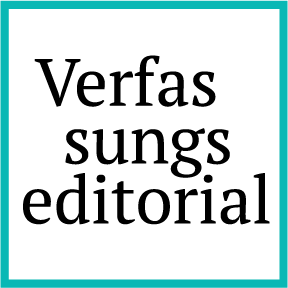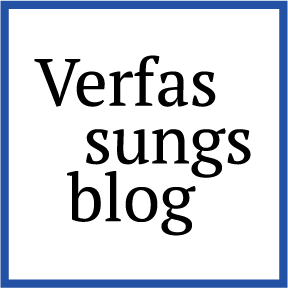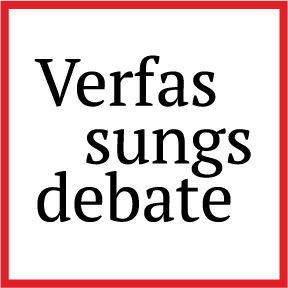Meat Consumption Corridors as Transformative Meat Governance
Introduction
Meat consumption corridors are a tool for transforming the current meat system. In a fair and just manner, they are intended – both conceptually and in practice – to help bring high meat consumption down to levels that can be considered ecologically sustainable and socially acceptable. Accordingly, this tool also supports scaling down and moving away from industrial animal agriculture. The mix of strategies for transforming meat production and consumption that the Heidelberg Declaration of Transforming Global Meat Governance suggests are very much in line with possible strategies to bring about meat consumption corridors.
Similar to the collective soft denial of the urgency and severity of the climate and ecological crisis, whereby full awareness and difficult emotions are pushed to a climate shadow, society is also in denial of the urgent need to move away from the current industrial meat system that links to the planetary crisis in many ways. To some extent this is because powerful vested interests do everything they can (see here, here, and here) to preserve the status quo, or even to increase meat production and consumption. But partly, as many people want to continue eating meat for cultural, ideological or emotional reasons, there is also still a lot of willful ignorance – not wanting to know – of the many negatives related to the industrial meat system and overconsumption of meat.
However, some experts believe that societies will soon have to move away from producing and consuming industrial meat, whether we want to or not. Apart from all its negative impacts, industrial meat production at scale is simply too inefficient and consumes too many resources and carries too many risks. The time for an orderly transformation is now.
Especially since meat consumption corridors engage with deliberative food democracy, this governance tool could offer a frame for a less inflamed, smoother transformation. In this blog, I will briefly describe the corridor model and its potential operationalization. I will also explore ways in which the corridor framework could positively change discourses, in particular by addressing the politicized meat/no-meat dichotomy.
More on consumption corridors
Consumption corridors define “floors” and “ceilings” for consumption. The floors should be socially negotiated and represent an acceptable minimum level of consumption, something people can have a right to, similarly to people having a right to an adequate standard of living and well-being. Correspondingly, the ceilings represent the maximum level of consumption that respects planetary boundaries and consequently allows for others – including current humans but also future generations – to consume at least at the minimum level. The ceilings therefore signify collective responsibility in consumption.
Consumption corridors focus on the good life – what is enough, or sufficient, as both a minimum and a maximum – as well as on socio-ecological justice, considering future human generations and the rest of the living planet. Importantly, the realization of the corridors includes science-informed deliberation and negotiation among citizen-consumers and other stakeholder groups through participative democracy.
Several research projects have examined the acceptance of limits to specific kinds of consumption (for example, of energy, of fashion, and of home electronics and other large material items). The corridor concept itself has also been tested. These studies suggest that citizens may be willing to discuss and even accept certain consumption limits, at least when such limits arise from societal processes and consider cultural and social contexts. When applying this general concept to meat, a sustainable meat consumption corridor defines meat consumption that is socially and culturally acceptable while being nutritionally adequate and environmentally sustainable.
One initial blueprint for a meat corridor, up for further negotiation through deliberative processes, could be the updated Planetary Health Diet. This diet includes only low amounts of meat and other animal-based food products and therefore supports radical reductions in industrial meat production.
There exists at least one case of experimenting with the idea of meat corridors, following the Planetary Health Diet. In this very recent study, a representative group of Italians were asked how they would feel about meat reduction policies in Italy. The study suggests that many Italians could be ready to accept a well-planned and executed meat reduction policy.
Controversial boundaries
Despite their intended association with good life, fairness and justice, meat consumption corridors are undoubtedly controversial to many people, and for more than one reason.
To begin with, the ceilings are likely to signify constraints to individual freedom, restricting consumption that is not only an everyday practice for many but also meets needs beyond nutrition. The ceilings limit something most people probably still feel should be free of any limitations.
However, freedom as such needs redefining. In order to have any chance of building sustainable societies, we must move away from thinking of freedom as “freedom from” external management of consumption and towards “freedom to” democratically participate in building sustainable, good-life societies.
In fact, there have always been limits to the freedom to consume, involving, for example, personal limits of finance, space, time, or physical abilities. To cope with our current predicament, we must widen the concept of acceptable limits to perceived freedom to include planetary limits – as expressed, for example, via consumption corridors, which simply imply freedom within limits and responsibility to stay within those limits.
Moreover, meat consumption corridor floors suggest that humans have a right to consume other animals. While it can be assumed that people have a right to adequate and healthy food, can they also have a right to eat meat? While many meat eaters might believe so, such a framing is considered by others to be in clear conflict with animal ethics. However, considering meat’s current role as a central “need satisfier”, meat consumption corridors could offer at least a temporary solution in bringing consumption and production down to ecologically sustainable levels.
For the time being, then, seeing that people have a “right” (or at any rate the freedom) to engage in a low, sustainable level of meat consumption can facilitate a transformation in this highly polarizing area. The corridors might become unnecessary at some future point; in particular, if eating meat as such, or at least eating industrial meat, becomes denormalized, or if societies generally start to prioritize non-human animal rights over the “right” of humans to eat meat. Similarly, if future meat replacements – new meats such as cultivated, fermented, or plant-based meats — would be able to adequately replace conventional, animal-based meat, we might no longer need this kind of governance tool for meat.
Critical public discourses
To gain policy acceptance in a particularly controversial matter, the discourse level – public discussions, dominant meanings, and paradigms – should be addressed before any bigger policy steps of developing or employing corridors. New discussions of what freedom means, in a world that is both rapidly changing and also in need of urgent new, sustainable directions, would be in line with this.
Specific discourse tools can also be of assistance. A sustainable consumption corridor for meat is, in fact, part of a range, or a continuum of meatways (see figure below), which comprises all different, both sustainable and unsustainable ways to consume, or not consume, traditional meat or the new meats. In the meatways continuum, these different ways can be seen as steps along a journey, rather than strict identities (e.g., vegan, omnivore, flexitarian) that easily provoke other people who have different identities.

This kind of continuum thinking is more descriptive than normative and can therefore ease tensions in society. In particular, it may move people away from the still dominant dichotomy associated with eating meat vs. no-meat. It also supports the expansion of the meaning of meat, already underway largely due to the new meats. Further, it recognizes slower journeys along the continuum and, if we assume that the general journey direction is towards sustainability, it also accommodates an occasional step “backwards”.
Due to these qualities, continuum thinking can help enable both individual and societal change in diets. Overall, this discursive tool could strengthen transformation discourses and, therefore, assist in the transformation towards sustainable meat consumption.
Negotiating floors and ceilings
Putting meat consumption corridors into practice involves collective negotiation. It should also involve experimentation, especially at local levels where new ideas are more easily introduced and vested interests often have less influence than they might have in the national policy scene. For example, as long as the process would be adequately informed by expert knowledge, deliberating meat corridor floors and ceilings could be done on an experimental basis in local food policy councils.
Food policy councils have existed in many countries since the 1980s. They are often initiated by civil society and bring together different stakeholders to discuss, coordinate and influence local food policies. In addition to ordinary citizens, they frequently include representatives of community and civil society organizations, public institutions, and market actors.
There is a chance that negotiations about meat corridors end up with demands for floors that are higher than a ceiling that fits within the planetary boundaries, initially making an ecologically sustainable corridor impossible. One solution to this challenge might be to encourage the acceptance of lower floors as an experimentation only, while perceived needs may remain at a higher level. Over some time, shifting values and norms may transform perceived needs and enable the acceptance of floors below sustainable ceilings.
If governments take deliberative food democracy seriously, these processes might even offer willing governments a way out of the lock-in of corporate capture of food system governance. In this sense then, meat consumption corridors could help challenge the power structures embedded in the current meat system.
Implementing corridors
Following some local experimentation, it might well be feasible to try the consumption corridor governance tool in broader, national policymaking. After science-informed deliberation between different stakeholders, such as consumers, civil society organizations, policymakers, farmers, scientists, and perhaps, in only a limited role, some industry actors, many policy choices remain for implementing meat consumption corridors while supporting a transformation away from industrial meat production.
Such policies may be “softer” or “harder”, depending on how much new regulation they require or how much resistance they are likely to get from different societal actors. Similarly, the interventions may range from fairly light touches to firm interventions. Ultimately, implementation could include binding reduction targets, similar to greenhouse gas reduction targets formulated for many economic sectors.
To the lighter side belong new food guidelines, education, and new skills in plant-based cooking. Somewhat firmer measures include, for example, default plant-based public catering options, meat taxes, bans on meat advertisement, stronger animal welfare legislation, and policies for a just transition for workers in the industrial meat production chain. Further, such interventions would include financial support in some form for new meats, traditional plant-based protein foods, and agroecological farming. The strongest interventions involve, for example, removing all subsidies to industrial meat production, creating animal rights legislation that also applies to production animals, and public rationing of meat consumption.
Importantly, for the various interventions to be successful in transforming the meat system, different types of measures should be bundled together and strategically sequenced, which is argued to be critical for enabling transformative food policy. For example, softer measures should precede harder ones, or at least accompany them.
Many of the harder measures would be financial and, therefore, translate into a process of defunding industrial meat production. It can be said that, while consumption corridors provide a frame and literal targets for strong sustainability governance of the meat system, policies for defunding meat offer one central focus for new meat policy and a means for achieving its reduction targets.
Indeed, the central medium-term aim for meat policy must be the radical reduction in meat consumption, as well as the replacement of industrial meat production with sustainable alternative production at a much lower level. In particular, the main objective should not be the development and promotion of alternatives to meat, such as the new meats. This is because mainly focusing on the alternatives may well just increase overall consumption, rather than lead to radical reductions in traditional, animal-based meat production and consumption.
Imagining the future
Many argue that current societies need new visions, stories, imaginaries, and narratives of why we are where we are, what we could and should be aiming for, and why this might be good for us, whether in terms of human relationship to other animals or in the sustainability transformation overall. Such imagining alone may already create positive change.
The growing literature and interest on consumption corridors can be seen to be partly rooted in such visions of the near future and in trying to figure out the range of possibilities for realizing those visions.
In addition, I believe that socially engaging with the fair, forward-looking, and essentially positive consumption corridor framework could help tackle the dangerous societal inaction originating in collective denial of the urgency and severity of the larger planetary crisis. Similarly, engaging with meat consumption corridors could help tackle denial of the urgency of overhauling the current destructive meat system.



